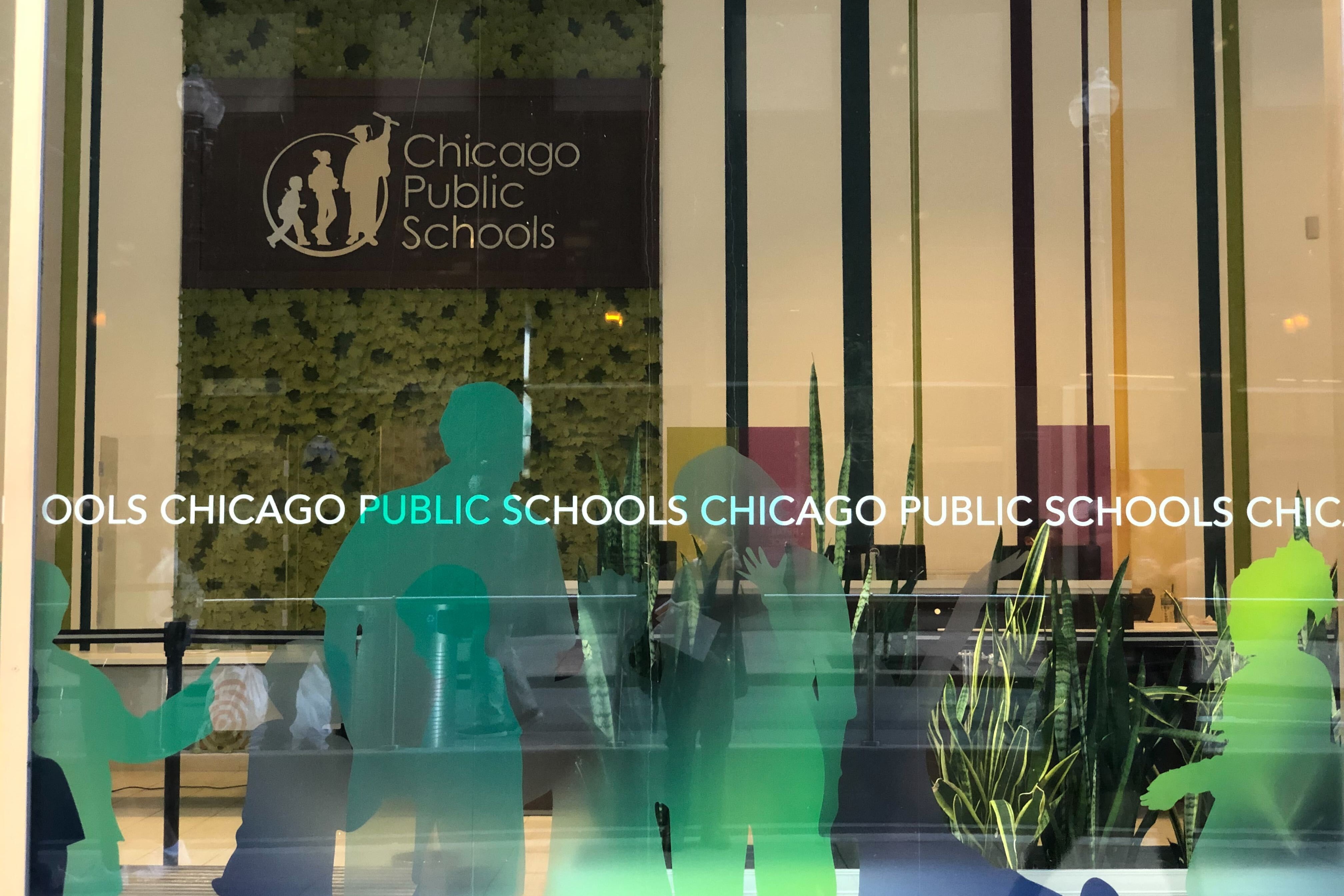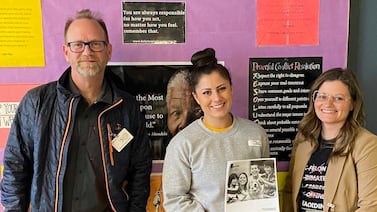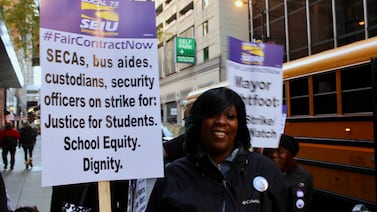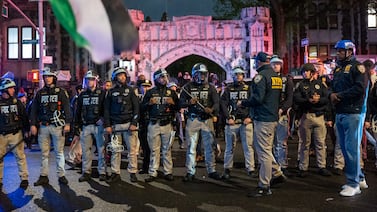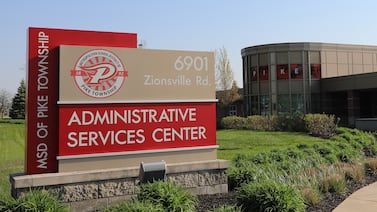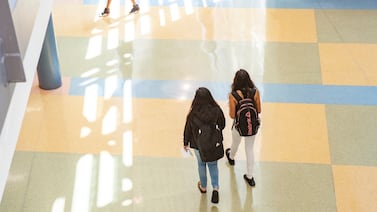Illinois lawmakers are giving themselves more time to divide Chicago into districts ahead of the city’s first school board elections.
Under a measure passed late Thursday night, the deadline for drawing the maps for the city’s school board moves to April 1, 2024 — seven months before the first elections are scheduled to be held. Chicago will move from a seven-member board appointed by the mayor to a 21-member board, with 10 members elected Nov. 5, 2024 and the rest elected in November 2026.
In a statement, Rep. Ann Willliams, who represents parts of Chicago’s north side and chairs the state House Democrats’ Chicago Public Schools Districting Working Group, said conversations have been “extremely productive.” But, “in order to create the strongest possible map and ensure all Chicagaons are able to elect the candidates that best represent their values, our work must continue.”
The delay comes after Chicagoans voiced concerns over whether voting districts would reflect CPS enrollment or the city’s overall population.
They also criticized legislators for rushing to create districts that will determine representation for the next several years before adjourning their spring session to meet a previous July 1 deadline.
Several advocates applauded the decision to delay.
“I’m very glad that the voice of reason prevailed and they did not just ram a flawed map down our throats,” said Valerie Leonard, the leader of the Illinois African Americans For Equitable Redistricting, which submitted a map based largely on existing City Council Ward boundaries.
Leonard urged lawmakers to use the time wisely. So did Miriam Bhimani, a Chicago Public Schools parent who is part of The FOIA Bakery, a group of parents and data advocates pushing for a transparent map-making process.
“The extra time means that we can engage honestly and transparently with communities across the city about what an elected school board should look like and what their responsibilities are,” Bhimani said.
In an effort to spur more public engagement and conversation, The FOIA Bakery published 2,000 computer-generated maps earlier this month they say comply with the Voting Rights Act, and maximize minority representation, as well as take into account where public school students live.
Drawing a representative map in a segregated city, school district
Lawmakers released two drafts in recent weeks. The most recent draft has seven Black majority districts, five majority Latino, two with a Latino plurality, five majority white, and one with a white plurality. The initial proposal had two districts with a white plurality and one with a Latino plurality. Currently, one of seven appointed school board members is white.
Typically, electoral districts are drawn – and redrawn – based on voting-age population or total population after every census. In Chicago, the population is 33% white, 29% Latino, and 29% Black, but the public school district’s student population is 46.5% Latino, 36% Black, 11% white, and 4% Asian American. The city is also one of the country’s most segregated, making that dissonance even more of a challenge to those trying to draw representative maps.
“It’s a segregated city, the North Side doesn’t know what’s going on in the South Side; a parent who doesn’t have a kid in CPS, they don’t know their needs,” said Vanessa Espinoza, a public school parent who’s part of Kids First Chicago, which submitted a map and testimony to state lawmakers. “Even if you have a good intention, you don’t have the knowledge and experience.”
Espinoza said lawmakers should try to draw a map that considers the public school student population.
Leonard, with African Americans for Equitable Redistricting, said she also wants to see a responsive, representative school board with members who have “lived experience with our schools versus people in ivory towers who have never experienced poverty.”
But she said that giving neighborhoods where more Chicago Public School students live more weight could violate the constitution’s equal protection clause.
“It could fly in the face of the one man, one vote, equal protection under the law, even though it’s a noble idea.” Leonard said.
Jianan Shi, executive director of Raise Your Hand for Illinois Public Education, a parent group that was part of a coalition of community groups that submitted maps in partnership with the Chicago Teachers Union, said he hopes the extended deadline will allow everyone to “get to the table” to find a compromise.
“There’s no perfect map,” Shi said. “How do we take in as much feedback as possible and keep making versions until we get closer?”
New deadline could shorten school board campaign season
The first-ever Chicago school board elections are scheduled to take place on Nov. 5, 2024. So when lawmakers approved the measure to give themselves a new April 1, 2024 deadline, Shi initially thought: “Shoot. I wish I was going to get out this information as soon as possible to our parents.”
“I want as much time as possible to educate people about the maps and where the boundaries are,” Shi said. Raise Your Hand is one of a few community groups that help train parents and community members to run for and serve on Local School Councils in Chicago. The councils are like mini-school boards serving individual campuses that make decisions over school improvement, principal selection, and parts of the budget.
Max Bever, a Chicago Board of Elections spokesman, said Friday the board had been planning to notify voters of their new school board districts through mailers around Labor Day this year, but will now face “a time crunch to get that all done.”
“Our team will be ready, but it’s more just having enough time for people to have awareness of: What’s your district? Who is running?” Bever said. “This also might be a very quick period for candidates.”
Bever said the timeline for candidates to collect the 250 signatures needed to get on the ballot will likely be during summer 2024. Because Chicago’s school board elections are nonpartisan, they will not be on the ballot in the March 2024 primary.
Rep. Ann Williams said the election is still on target for November 2024. The legislature will wrap up their spring session this week, but members are due back for a veto session in the fall when they could take action on a school board map. They could also wait until the next spring session begins in early 2024 to finalize how the city will be divided.
Lawmakers could also decide in the next session to clarify or tweak the law that created the 21-member elected school board for Chicago. There have been questions about whether board members should be compensated or if there should be campaign spending limits that are stricter than Illinois’ broader election limits. Neither exist in the law as it’s currently written.
“I think some of the campaign spending limits that people have talked about would be really helpful to ensure that the everyday Chicago mom and dad could run for the board without having to have either wealth or special interests backing them,” said Daniel Anello, CEO of Kids First Chicago.
Another concern raised by Kids First Chicago and others is that noncitizens will not be allowed to vote or serve on Chicago’s school board. However, the existing law requires a noncitizen advisory committee be created. Leonard said she would like to see something similar for Black families. Her group is proposing the creation of an African American Affairs Committee.
“If, for some reason, we end up with representation that doesn’t necessarily reflect the school population, at least you’ll have those permanent committees in place to make sure the interests of minorities are represented,” she said.
Becky Vevea is the bureau chief for Chalkbeat Chicago. Contact Becky at bvevea@chalkbeat.org.


